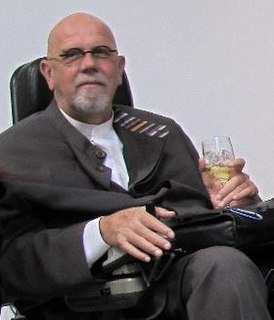Top 104 Quotes & Sayings by Chuck Close
Explore popular quotes and sayings by an American artist Chuck Close.
Last updated on April 14, 2025.
Never let anyone define what you are capable of by using parameters that don't apply to you. Inspiration is for amateurs, the rest of us just show up and get to work. Every great idea I've ever had grew out of work itself. Sign onto a process and see where it takes you. You don't have to invent the wheel everyday. Today you will do what you did yesterday, tomorrow you will do what you did today. Eventually, you will get somewhere.
























